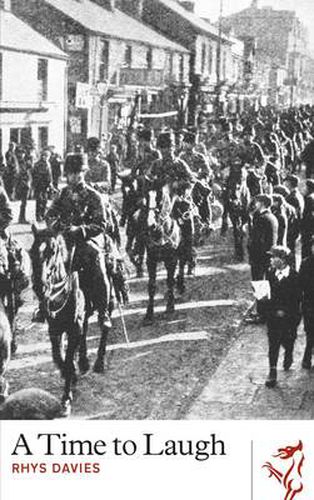Readings Newsletter
Become a Readings Member to make your shopping experience even easier.
Sign in or sign up for free!
You’re not far away from qualifying for FREE standard shipping within Australia
You’ve qualified for FREE standard shipping within Australia
The cart is loading…






‘Tumult and disorder, frustration, wages, strikes, riots, debts - were these to be his world? Ugliness, squalor and meanness was their portion. And yet, and yet …They had the full tarnished brilliance of life in them. And he began to laugh, with a soft low sound, half caught in his throat.’ The second novel in the Rhondda Trilogy - ‘the most sustained literary examination of Welsh industrial history ever published and certainly the least ideologically distorted’ - A Time to Laugh (1937) is set in a coal-mining valley on the eve of the 20th century. It is set against a background of industrial unrest and social change. The old certainties of pastoral Rhondda have given way to a new age of capital and steam, and life in the Valley has been transformed by strike, riot and gruelling poverty. The central character is Dr Tudor Morris, whose ancient estate has been sold to one of the railway companies opening up the Rhondda for the purpose of extracting coal and taking it down the Valley to the docks in Cardiff. The doctor abandons his class and seeks personal salvation among the poor. Although expressly radical in its sympathy for the working class, the novel also finds a place for local tradespeople, the small shopocracy to which Davies’s family (grocers in Blaenclydach near Tonypandy) belonged: they remain neutral, non-political, with their livelihoods threatened, hapless bystanders in the social upheaval of the day. Like Rhys Davies himself, they are mere observers of the strike, which is based on the Haulers’ Strike of 1893 and the Cambrian Combine Lock-out, here set in December 1899, that led to the famous Tonypandy Riots of 1910. The novel’s emphasis is on collective responsibility rather than personal revolt as depicted in Davies’s earlier novels, though he remains wary of Socialist ideology and the mentality it breeds. As for the Communists, they are seen as propagandists rather than the socially vital force they actually were in places like ‘red Rhondda’.
$9.00 standard shipping within Australia
FREE standard shipping within Australia for orders over $100.00
Express & International shipping calculated at checkout
‘Tumult and disorder, frustration, wages, strikes, riots, debts - were these to be his world? Ugliness, squalor and meanness was their portion. And yet, and yet …They had the full tarnished brilliance of life in them. And he began to laugh, with a soft low sound, half caught in his throat.’ The second novel in the Rhondda Trilogy - ‘the most sustained literary examination of Welsh industrial history ever published and certainly the least ideologically distorted’ - A Time to Laugh (1937) is set in a coal-mining valley on the eve of the 20th century. It is set against a background of industrial unrest and social change. The old certainties of pastoral Rhondda have given way to a new age of capital and steam, and life in the Valley has been transformed by strike, riot and gruelling poverty. The central character is Dr Tudor Morris, whose ancient estate has been sold to one of the railway companies opening up the Rhondda for the purpose of extracting coal and taking it down the Valley to the docks in Cardiff. The doctor abandons his class and seeks personal salvation among the poor. Although expressly radical in its sympathy for the working class, the novel also finds a place for local tradespeople, the small shopocracy to which Davies’s family (grocers in Blaenclydach near Tonypandy) belonged: they remain neutral, non-political, with their livelihoods threatened, hapless bystanders in the social upheaval of the day. Like Rhys Davies himself, they are mere observers of the strike, which is based on the Haulers’ Strike of 1893 and the Cambrian Combine Lock-out, here set in December 1899, that led to the famous Tonypandy Riots of 1910. The novel’s emphasis is on collective responsibility rather than personal revolt as depicted in Davies’s earlier novels, though he remains wary of Socialist ideology and the mentality it breeds. As for the Communists, they are seen as propagandists rather than the socially vital force they actually were in places like ‘red Rhondda’.